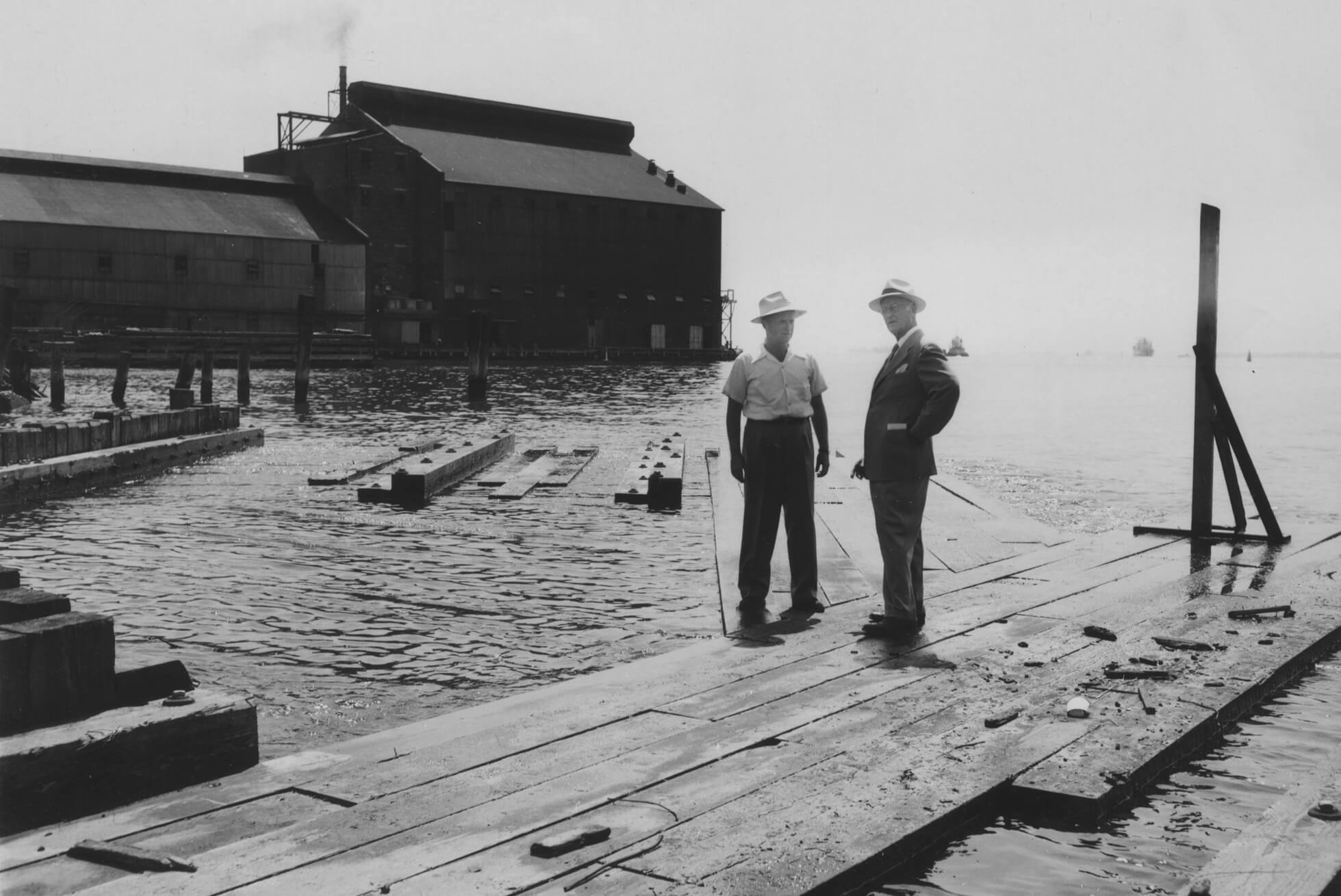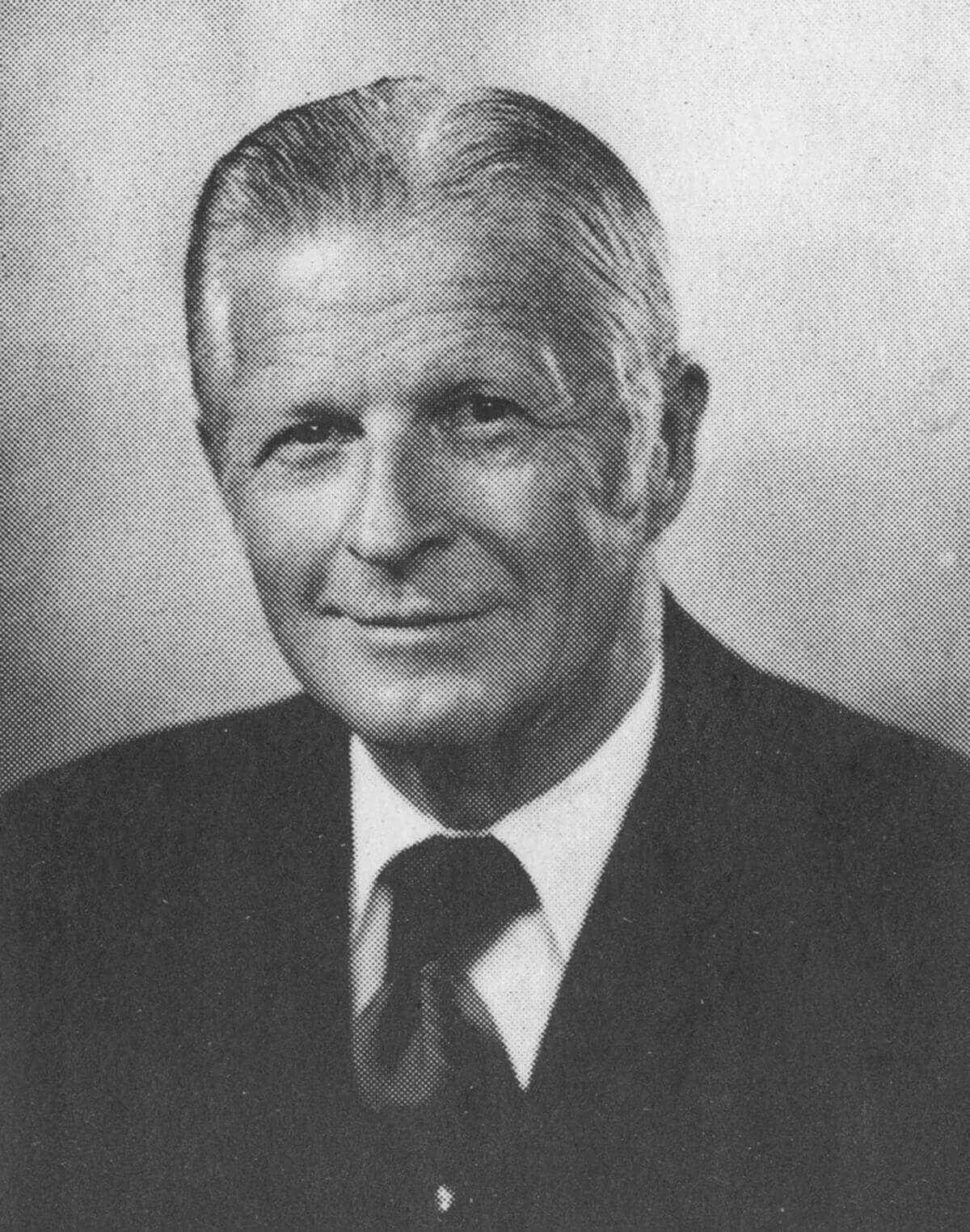Our History
Founded in 1921

Ladies and Gentlemen, I am honored to receive this award from such a fine organization. Time seems to have flown by for me - because 20 years ago I was sitting in the audience watching my Dad receive this organization's 7th Annual Award. And, I am very proud to have my son, Shaun, watching me receive the 27th Annual Award today.
I trust most of you know that my cousin, Bud Nixon, and I are the 3rd generation of Rukerts' managing the family business.
Our Grandfather, W. G. N. Rukert or "Cap Rukert" (as everyone knew him) founded Rukert Terminals over 75 years ago in 1921.
With an $800 loan from Drovers and Mechanics Bank, he and his brother George bought a truck, rented a stable in West Baltimore and became instant warehouseman. Cap Rukert was a real character. He was tough as nails, but also could be quite a charmer. He never wanted to hear that something couldn't be done. He would always find a way to get it done.
In 1927, Cap talked The McCormick Spice Company into selling him Jackson's Wharf in Fells Point. We then also became terminal operators and stevedores.
Somehow the new company managed to prosper during the Great Depression and in the early 1930's, the brothers separated with George preferring the moving and storage business and "Cap" preferring waterfront operations.
In 1937 Cap's next major acquisition was our Pier 5 facility in Canton. Cap Rukert He acquired a 400 foot wooden pier and 6 acres from the Pennsylvania Railroad Company. Cap continued to stay in Fells point and turned over the Canton operation to his son and my Dad, Norm Rukert, Sr.
During the early months of World War II, Rukert Terminals unloaded the last full rigged Clipper Ships carrying cargo into the Port of Baltimore. The "Abraham Rydberg" had loaded 3,400 Tons of bagged cotton seed meal in Santos, Brazil, and was bound for Boston when she diverted to Baltimore because of the growing threat of German submarines. This beautiful sailing ship required 16 days to unload. Quite a difference from the 60,000 Ton Panamax vessels that we now discharge in 5 days or the self-unloading conveyor vessels that drop off 30,000 tons in 10 hours
In the mid-1940's Cap acquired the Lazaretto Depot from the Western Maryland Railroad. He was convinced that it would be one of the most desirable properties in the Port of Baltimore and I believe that time has proven him correct. We have a wonderful view of Fort McHenry from this terminal, and of course, our own lighthouse.
In the early 1950's and again in the early 1960's the Company borrowed what it considered huge sums from Maryland National Bank to construct marginal wharfs and warehouses at this terminal. Cap was not afraid to borrow money to build his dream and he instilled this vision in my Dad who passed it on to us.
Cap Rukert passed away in 1974 after 53 years of service in our family business. In the late 1970's my Dad turned what we perceived as a catastrophe into a major expansion for our company.
The heart of the operations, Lazaretto Depot, was condemned by the State for the new Fort McHenry Harbor Tunnel. We were advised by many to take the money from the condemnation and leave the industry. My Dad did not hesitate for one minute -instead of going out of business- we expanded. We purchased 6 acres adjacent to our Pier 5 Terminal and began to build a new main office and 4 new multi-purpose warehouses. We also had Diver Brothers design a new berth for our Pier 5 Terminal which could be used for Ro-Ro Vessels and would be capable of supporting a large crane in the future. Another local firm, McClean Contracting Company, built our new berth in record time.
With the help of the Mayor (William Donald Schaefer), we were able to receive less money but have the property at Lazaretto Point returned to us with a new berth after the Fort McHenry tunnel was completed.
For years we had admired the large bulk unloader cranes at the Cottman Company in lower Canton. These cranes were close by and they unloaded all of our bulk products which we then moved by dump trucks to our warehouses. In 1981 we were notified by the Cottman Company that the cranes would be torn down in one year to make room for a new export coal facility. It seemed to be another catastrophe for the company but we had planned ahead. Our new berth at Pier 5 had been designed to support a crane.
In the next year and a half, we spent over 2 million dollars buying and erecting a new American made bulk unloader which we proudly painted red, white, & blue. This crane quickly paid for itself and enables us to continue expanding our business today. We are able to unload a variety of cargoes with this crane, such as salt, magnesite, gypsum, ferro alloys, sorel slag, and fertilizers.
In the late 1970's and early 1980's my Dad authored 5 local history books, the last one being the "Fort McHenry Story." He passed away in June of 1984 after working 52 years in the family business; but the expansion course he set for us has never stopped.
In a good year we now handle over 1 1/2 million tons of cargo through our terminals. I believe that most of you know that when it is snowing or sleeting, we at Rukert's are in our glory because we distribute the de-icing salt spread on the roads. In busy times during the harsh winters we move over 600 trucks per day through our facilities. Our mottos are, of course, "Think Snow" and "Ice is Nice."
Our formula for success is a simple one -hire dedicated employees, work hard, and reinvest the profits in the business.
Our family business is in its 76th year and this would not be possible if all of the Rukert Family was not committed to the Company's success. Bud's brother in Houston and my sister in Atlanta have provided us with encouragement and continuing support.
Baltimore is a great place to be in business. We have a wonderful natural harbor located closer to the heartland than any other port on the East Coast. We have hard working people, committed State and Local Governments and a fine Maryland Port Administration. And, we all know that the Port of Baltimore is the engine that drives the State.
Thank you for this award and the opportunity to be with you today.
Norman Rukert Sr. displayed a passion for history, Baltimore and Baltimore's waterfront. We are proud and excited to share this life-long work with you as expressed in his five books.
The Fells Point Story | (Amazon) (1976)
Historic Canton | (Amazon) (1978)
Federal Hill | (Amazon) (1980)
Fort McHenry | (Amazon) (1983)
Rukert's history as told by Helen Delich Bentley and Norman Rukert Sr.
"Cap" Rukert (Bentley 1967)
The Rukert Story (1981)
